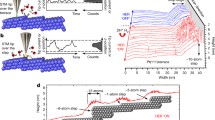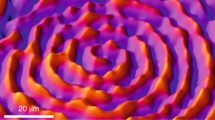Abstract
The period 1970-1999 witnessed astonishing advances in the ability to characterize surfaces and study reactions at solid surfaces. The chemical identity of surface species, their atomic geometries, the dynamics of their motions had become almost routinely available and mechanisms of surface reactions could be established with direct spectroscopic information on the participating surface species. Surface physics came of age and chemists were quick to take advantage in an imaginative way. Surface Science: the first Thirty Years, published in 1994, provides a useful guide as to how surface chemistry and catalysis benefited. Articles by Ehrlich, Goodman, Madey, Madix, Estrup, King, Ertl, van Hove, Somorjai and Roberts, provide an overview of the impact made by surface science during this period. Since 1994 we have also seen the very significant contribution Scanning Tunnelling Microscopy is making to our atomic level understanding of chemisorption and catalysis with contributions from Ertl, Wintterlin and Bradshaw in Berlin, Stensgaard and Besenbacher in Aarhus, Richardson and Liebsle in Liverpool, Bowker in Reading, Salmeron and Somorjai in Berkeley, Madix in Stanford and the Cardiff group (Carley, Davies and Roberts), with the latter combining STM with XPS to provide “chemical information”. Structural studies also were advanced with Thomas at the Royal Institution using x-ray absorption spectroscopy, available through the Daresbury Synchrotron Source, and x-ray diffraction under reaction conditions, to provide information on the active site of a working catalyst - the ultimate in catalytic research. Having widely available synchrotron radiation make also possible the determination of surface structures through photoelectron diffraction and surface x-ray absorption fine structure (SEXAFS) studies with groups active world-wide using both single crystals and “real catalysts”.
Similar content being viewed by others
Rights and permissions
About this article
Cite this article
Roberts, M. Surface sensitive spectroscopies andtheir impact on catalysis (1970-1999). Catalysis Letters 67, 41–53 (2000). https://doi.org/10.1023/A:1016683124721
Issue Date:
DOI: https://doi.org/10.1023/A:1016683124721




